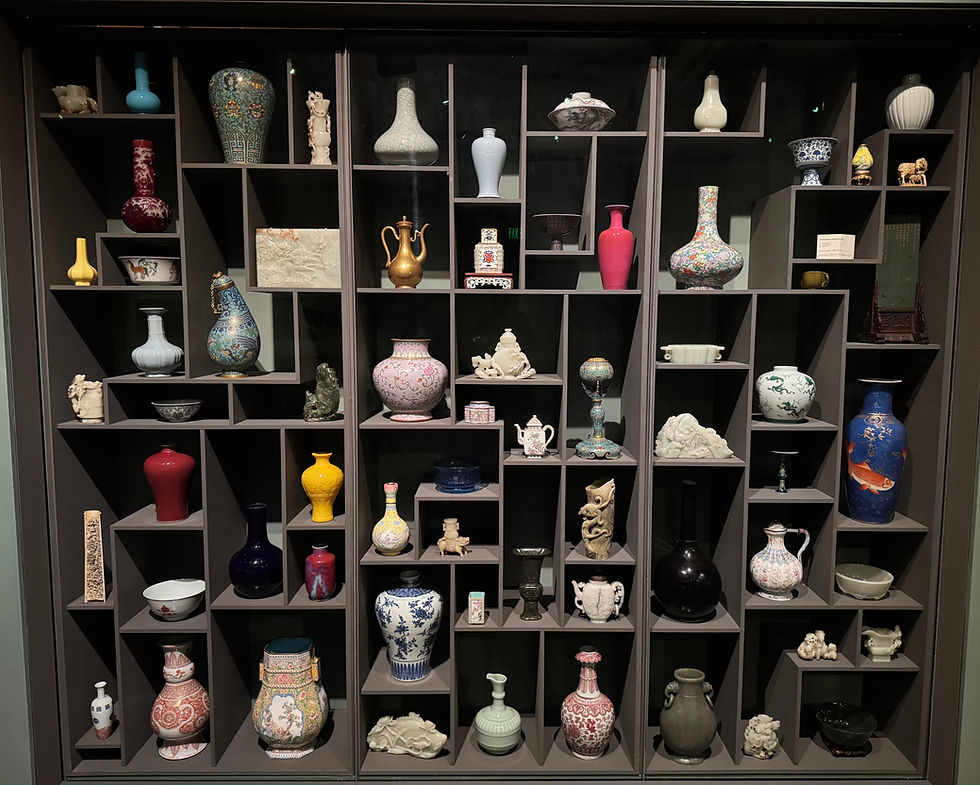New Year, More Asian Art Museums in Bath and London!
- Anthony Wu

- Jan 8, 2017
- 3 min read
Updated: Feb 17, 2025
Happy New Year and wishing everyone a very joyful and healthy 2017. I recently returned from my two week vacation to England and Paris. In addition to the museums visits I mentioned in my last posting, I managed to drop by two more before going home.
The first is the Museum of East Asian Art in Bath, England. It may seem quite a distance from London, but it is a pleasant 1.5 hour train ride from Paddington Station. The train was fairly fast and there is a small dining cart in case you need a snack.
The town of Bath is relatively small and all the sites and museums are within a 15 minute walk from the Bath Spa Railway Station. Bath's architecture is quite stunning, and there are a lot of restaurants, shops and pubs in the area. I visited the Roman Baths for about 2 hours (that's how the city got its name!), and from there walked another 10 minutes to the Museum of East Asian Art (photos attached below).
View of the Roman Baths in Bath, England

The Museum of East Asian Art in Bath, England

The museum itself is contained in a modest four-story townhouse. Founded in 1993, it is the only museum in the U.K. that focuses specifically on East and South East Asian Art. Their collection of Chinese Qing Dynasty jades is top-class, in addition to their collection of Ming and Qing Dynasty porcelain. Here are three highlights I selected from the museum:
1. A Chinese Pale Celadon Jade Bowl, Qing Dynasty, Qianlong Period (1736-1795)
This incredible carving (along with other top jade piece) is on loan to the museum from a single British collector. The bowl is large in size and depicts the expert carving of millet (sui) grouped with lingzhi fungus (fungus of immortality) in the interior - together they form the rebus for 'many years of longevity'. It would have bestowed good luck for its owner.

2. A Chinese Blue and White Saucer Dish, Ming Dynasty, Chenghua Mark and Period (1464-1487)
Despite it's small size, this little dish is one of the rarest and most desirable porcelain examples from the Ming Dynasty. This reign is distinguished by its soft use of cobalt blue, fine potting, and pleasant designs. Here we see a group of interlocking ruyi head (longevity fungus) lattices.

3. A Chinese Copper Red 'Nine Dragon' Bowl, Qing Dynasty, Yongzheng Mark and Period (1722-1735)
This bowl is featured in the museum's current exhibition 'Red - Culture, History and Craftsmenship' from 25 June 2016 to 12 February 2017. The show gives an overview of the importance of the colour red in Chinese art. This particular bowl really struck me for its beauty, grace and rarity. The copper red design of nine red dragons is more common during the Kangxi reign (1664-1722), and this is really the first time I'm seeing one from the Yongzheng reign (1722-1735) WITH a six-character reign mark within a double square. The more common Yongzheng reign mark is within a double circle.

On my last day on this trip, I managed to drop by the Victoria and Albert Museum in South Kensington, London and walked around for 3 hours. If you haven't visited, this museum emphasizes the history of design from across the world with themes including fashion, architecture, and the decorative arts.
Even though their focus is British design, they also hold one of the most internationally renowned collections of Asian Art with galleries focused on China, Japan, Korea, India, the Himalayas, South East Asia, and the Islamic World.
The photo below is just one of many display cases in the China Gallery. This one in particular showcases an overview of top highlights from the Shang Dynasty (c. 1600-1046 BC) to the Qing Dynasty (1644-1911). Enjoy!





Comments